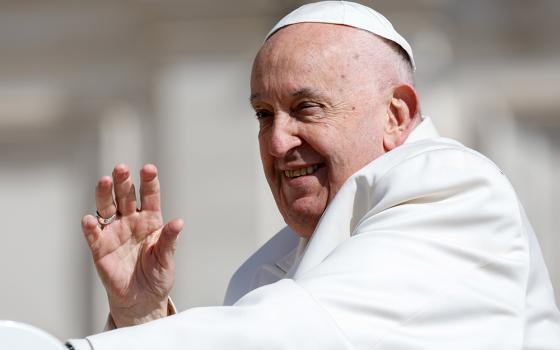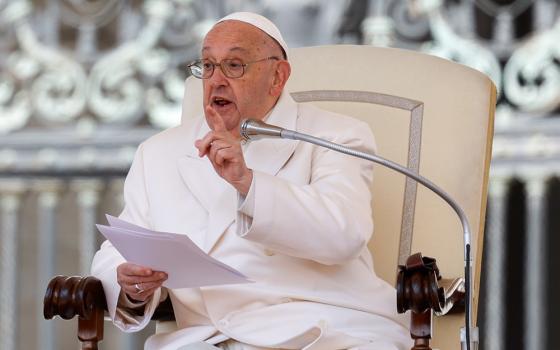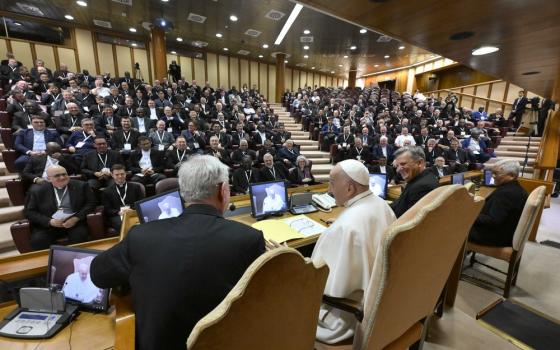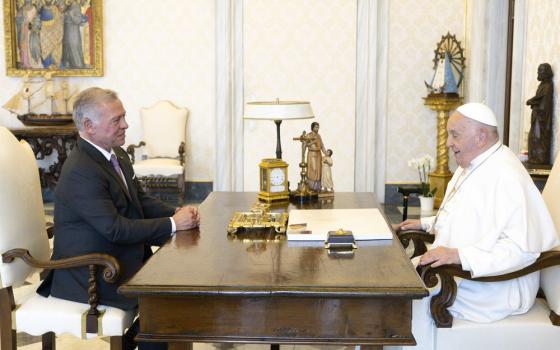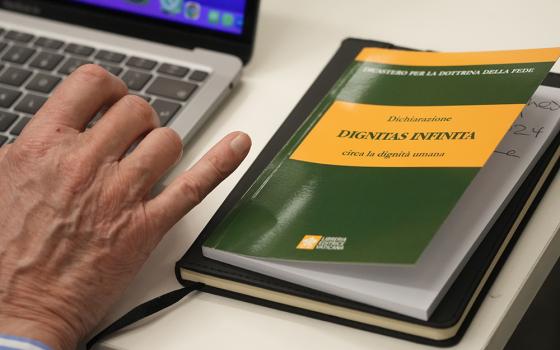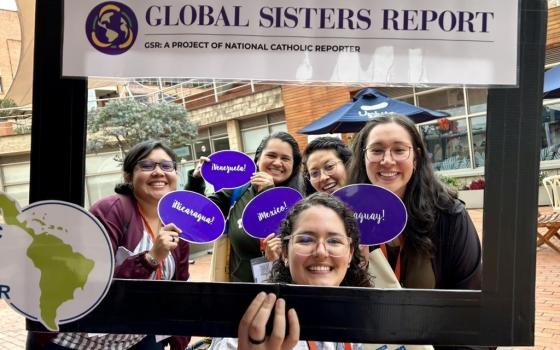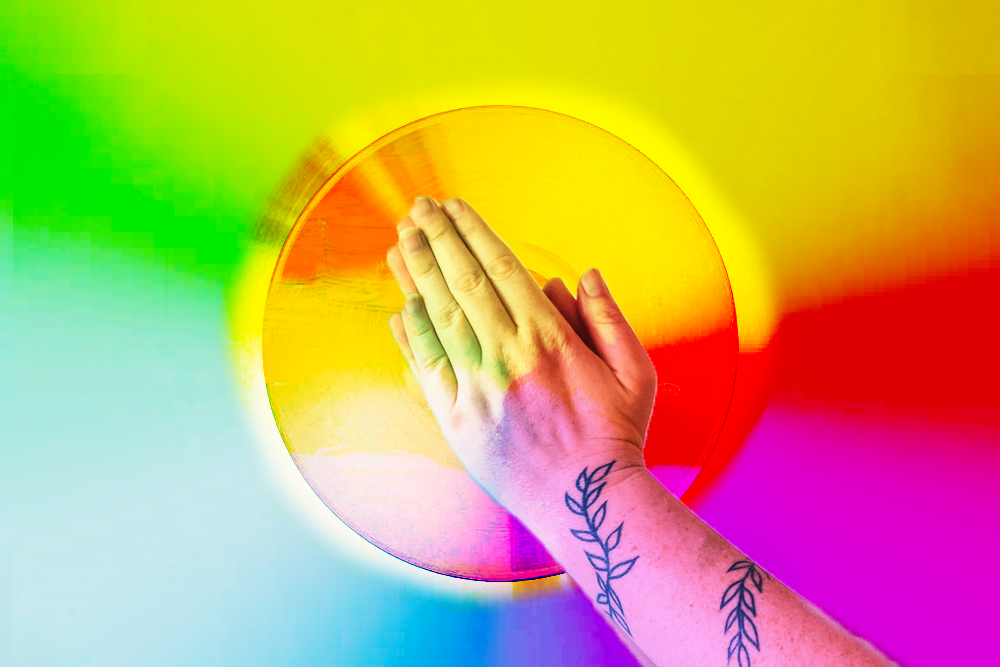
(Maxwell Kuzma)
Watching current events as a transgender person and a Catholic is enough to make my head spin these days. When Target stores began carrying new LGBTQ+ clothing in preparation for the month of June — including a line made and designed by an LGBTQ+ creator — radical conservatives went into some stores and destroyed the displays. Many linked this behavior to the outsized reaction to Bud Light by the same constituency: When the company sent a vanity can to a trans woman on TikTok, people destroyed cans of the beer as a protest.
It seems painfully obvious to point out that within the LGBTQ+ community, transgender people are currently a particular focus of outrage, anger and hate.
Then there's the Catholic church. Much has been written about the inconsistent standard in the modern, institutional American Catholic church in regards to the way LGBTQ+ identities are uniquely targeted.
Gay teachers are fired from Catholic schools, yet employees who are, say, cohabiting before marriage are allowed to remain on staff. Our stories are censored, edited or retold in such a way as to make them less queer. Inclusive language, such as identifying one's pronouns, is rejected in an attempt to make queerness less threatening to cis-het theology and more palatable in a heteronormative society.
We find God as we live out the identity given to us, sharing our gifts in the world with pride. Yes, pride.
Some Catholics feel that God requires everyone to live and present themselves in a way that is simply unrealistic, even for straight and cisgender people. There is no issue of belief in a shared creed, no issue of following the message of Jesus Christ; rather, the issue is a rigid legalism combined with a revisionist view of history and preoccupation with manmade tradition (emphasis on man).
The policing of language within the queer Catholic world — for example, the insistence on using terms like "same-sex attracted" or "transgenderism," neither of which are embraced within the communities they refer to — is not about being precise or theologically accurate. These terms signal a nonaffirming stance toward LGBTQ+ people and, perhaps even more harmful, serve to isolate queer Catholics from the broader queer community, feeding the narrative that the two communities are exclusive and unable to connect.
Throughout history, the strategy hasn't changed much. During the AIDS crisis, homosexuality was portrayed as an inappropriate topic for children and it was claimed that inclusion of gay folks in society was a recruitment tactic. We hear the same about transgender people today.
But LGBTQ+ people have never been trying to recruit anyone; we've just been trying to stay alive. And we have had to work so hard for self-acceptance in a hostile society that we've found it important to speak out about our experiences and our identities, knowing our witness of hope might just save someone else's life.
Part of that experience and identity, for many of us, is our spiritual life. Often, being visibly queer is enough to make some Christians assume that someone is not spiritual at all. But queerness does not preclude faith.
There are many passionate queer Christians and Catholics, some of them visibly queer but many hidden in plain sight: Take, for instance, bisexual people who are in heterosexual marriages. Their queerness is not erased because of their partner. They, too, share in the rich history of queer spirituality.
Advertisement
LGBTQ+ Catholics have rich spiritualities. We find the queer-coded saints (Joan of Arc, St. Stephen, Julian of Norwich, and many more) despite attempts to hide them away or rewrite their stories. We celebrate the intimacy of same-sex friendships in the Bible (David and Jonathan, Naomi and Ruth, even the relationship between Jesus and the apostle John—"the one Jesus loved"). These examples of holy same-sex friendships provide a unique inspiration for the queer community because they serve as spiritual role models for relationships familiar to us; queer representation doesn't have to be explicitly romantic in order to resonate.
We participate in the church community in ways we are permitted to: in music ministry, as altar servers, on parish committees, etc. We practice devotion to the Sacred Heart of Jesus or to Our Lady of Sorrows, resonating in a unique way with Our Lady's suffering. We make pretty fantastic religious art.
LGBTQ+ people articulate the Stations of the Cross in a way others have often never considered, because we add details unique to our experience: elevating the leadership of women, emphasizing the importance of having an ally like Simon to help carry your cross, knowing a solidarity with Jesus' experience of betrayal and condemnation, the way he was deeply misunderstood by the people of his time — even by some of his friends.
You see, we find God in the places they've said we're not supposed to: in a haircut, in wearing clothes from across the aisle, in holding hands with the one we love. We see beauty in the scars left from a gender-affirming surgery, just as we see beauty in the wounds of Christ.
We find God as we live out the identity given to us, sharing our gifts in the world with pride. Yes, pride.






